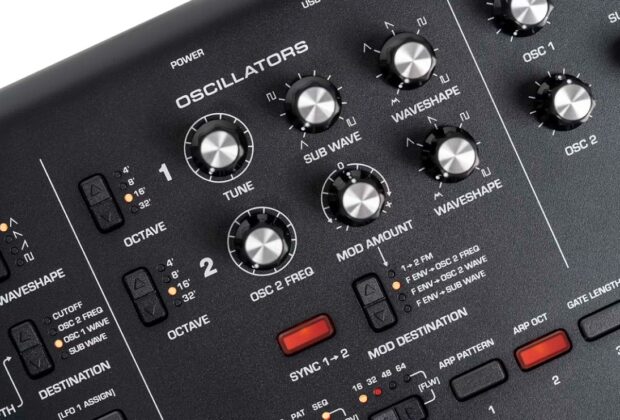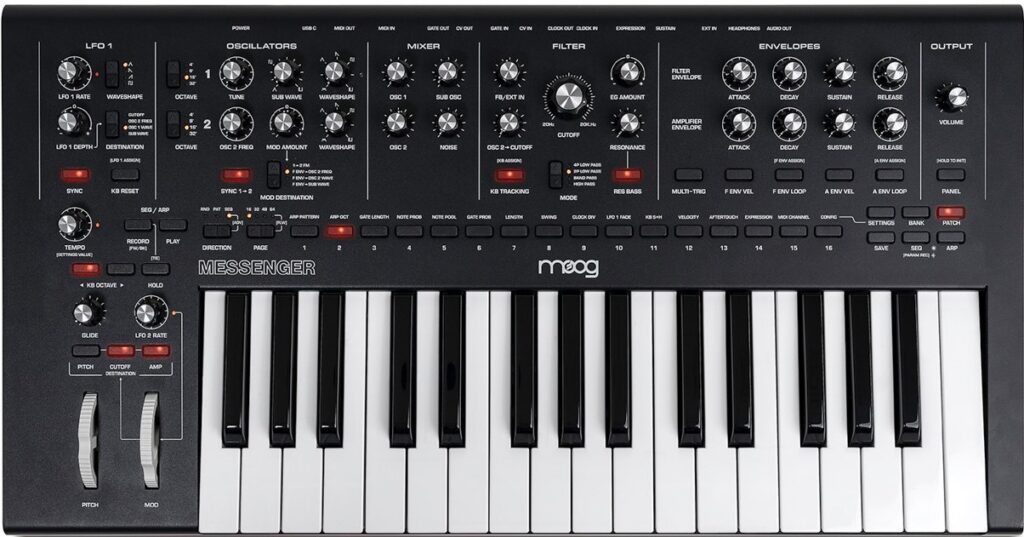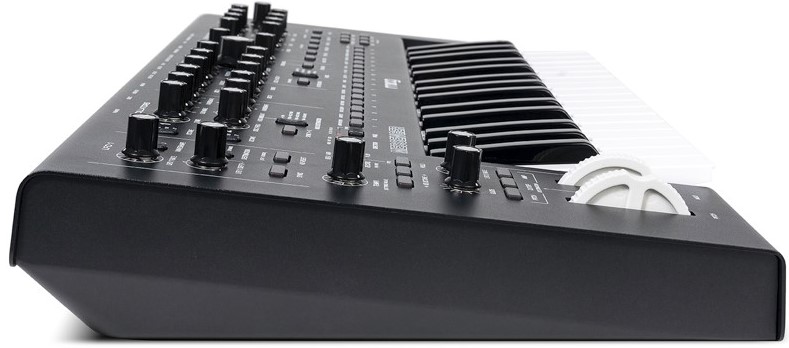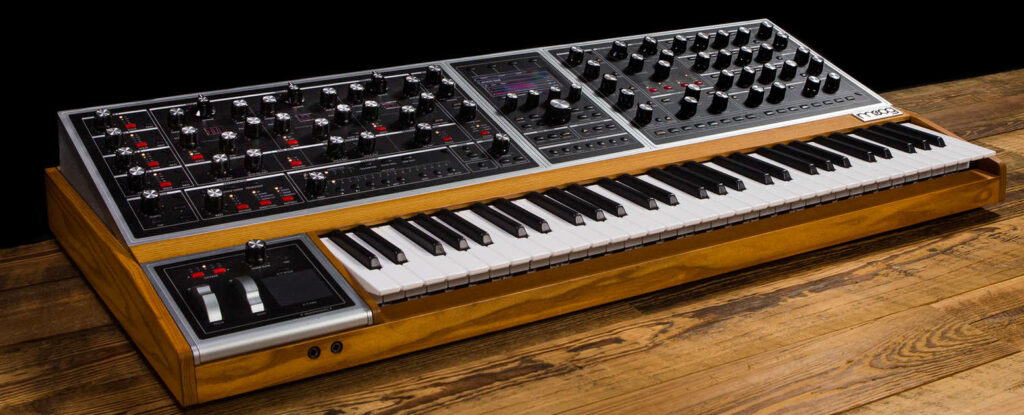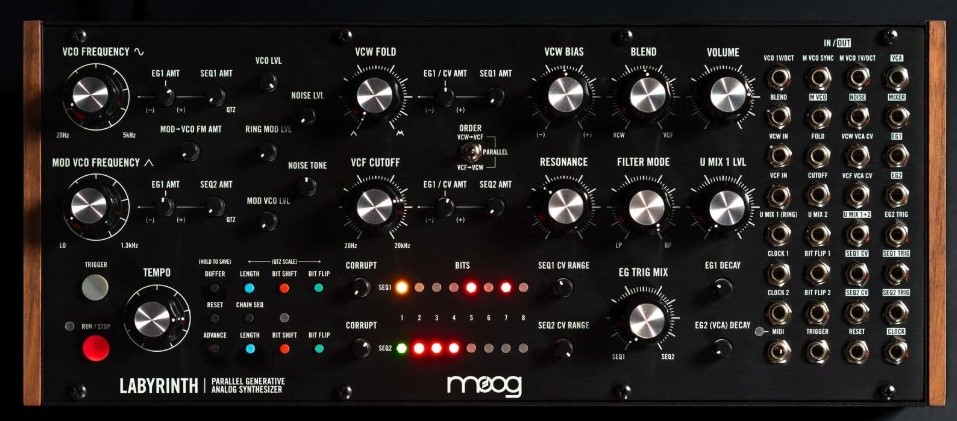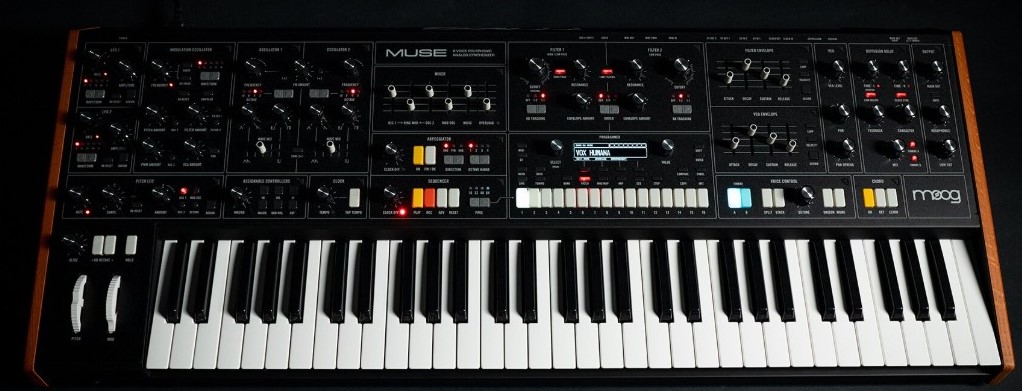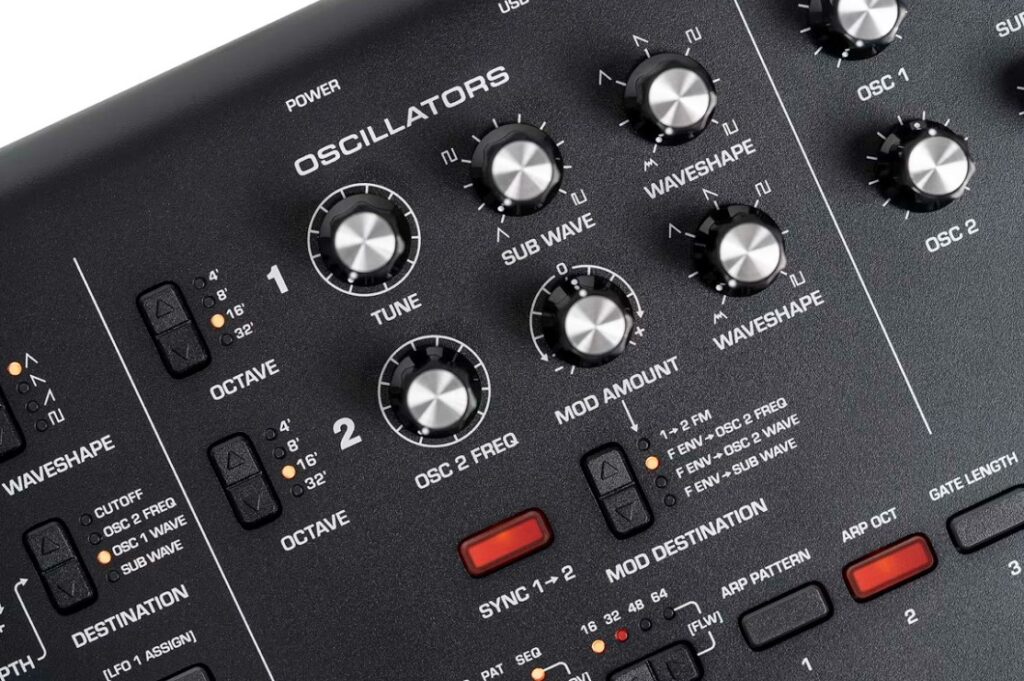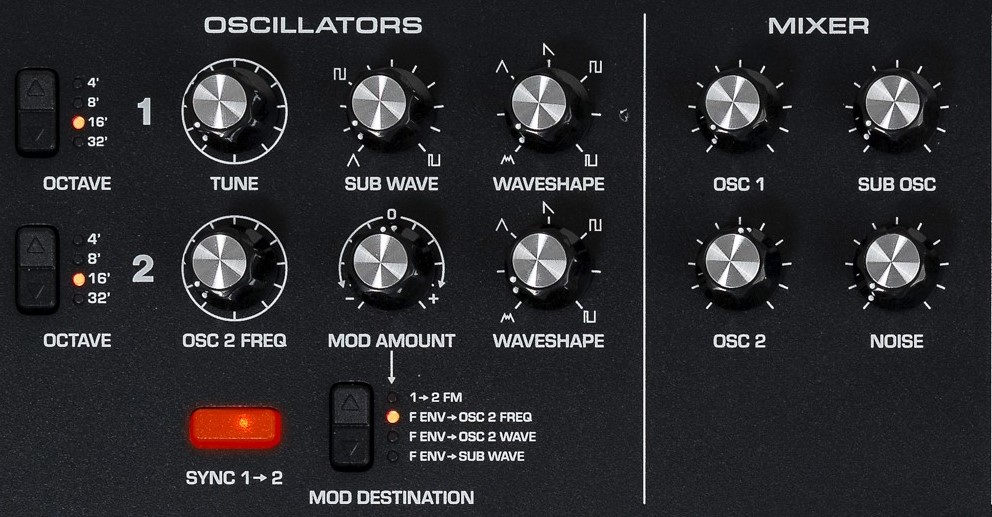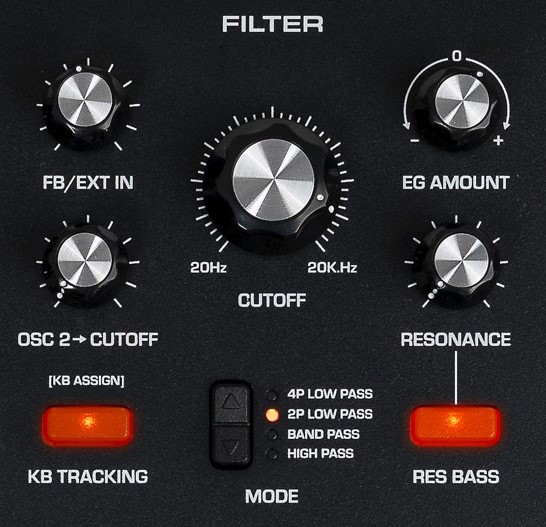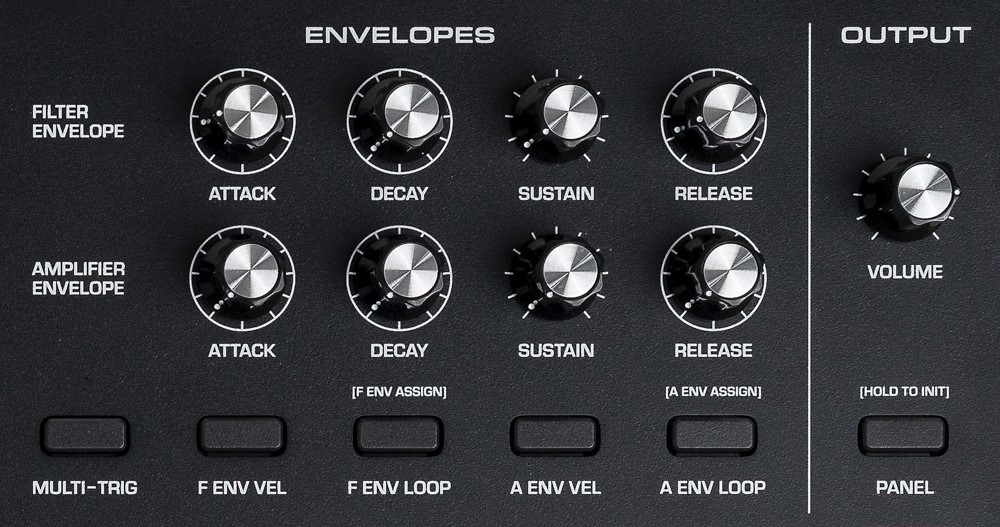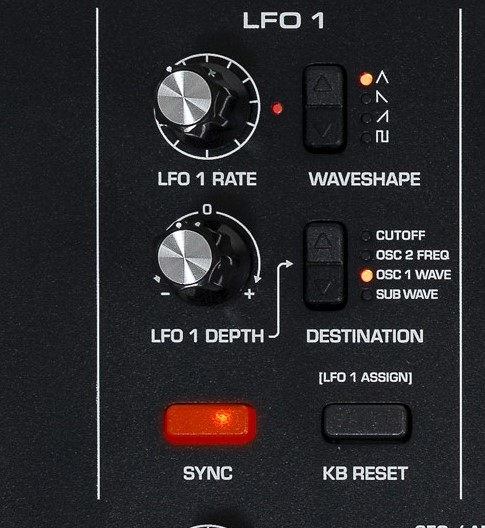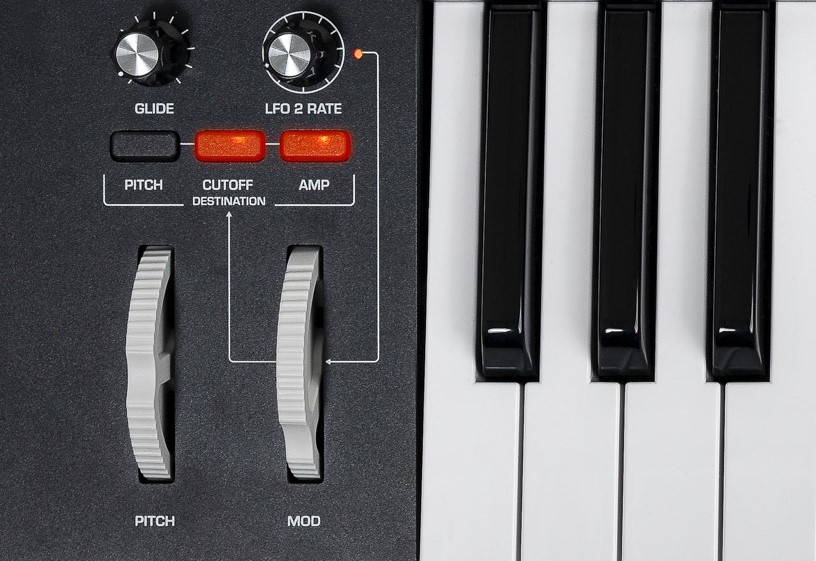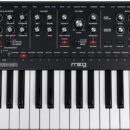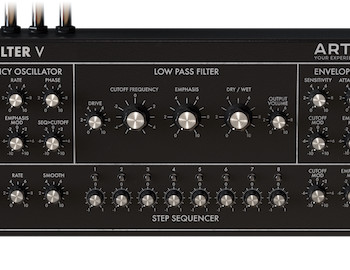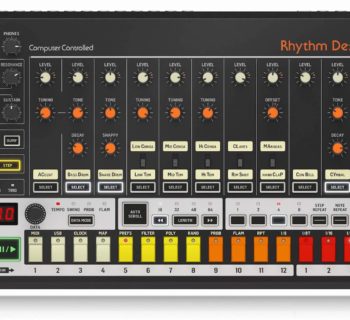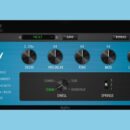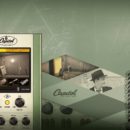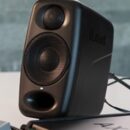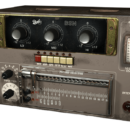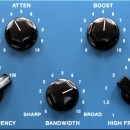Link per la versione italiana
Two years after Moog joined inMusic, the first monophonic synth of the new era arrives, with several surprises and a list price under 900 €
Since inMusic acquired Moog in 2023, we have all wondered what development this choice might have. Messenger is the answer, and it is an important, clear answer, in the Moog tradition but with all the power of inMusic when it comes to production, logistics and service. In a preview for the press only, several topics were addressed and the new monophonic Messenger was unveiled, ready for the new generation, but not only, of keyboardists.
At the glance
- Messenger is the first monophonic synth developed and produced since Moog joined inMusic.
- Messenger is a remarkably powerful entry level synth, 32-key standard keyboard with velocity and aftertouch, under 900 €.
- Messenger also includes features taken from previous synths: wavefolder from Labyrinth, modulation assignment from Moog One, arpeggiator and sequencer from Muse.
- Messenger expands analog ladder LP 24 dB/Oct filter with new 12 dB/Oct LPF, 24 dB/Oct HPF and 24 dB/Oct BPF, all with resonance and the new bass compensation function.
- Messenger transmits and receives CC from panel, with standard MIDI and USB/MIDI interface combinable. Messenger has analog VCO, VCF and VCA, with classic Moog sound, and digital envelopes.
What (hasn't) changed with inMusic
In the past two years, Moog has released Labyrinth and Muse. Both projects were already in place at the time of the acquisition, so they were completed and brought to market. Messenger is the first synth whose development, construction and launch came under the inMusic umbrella, taking advantage of all the industrialization and logistics available. Messenger is a synth suitable for all budgets and for those entering the world of synthesis. To keep the price competitive, Messenger is Made in China, but the sound is Moog's, which is the first requirement when choosing a Moog synth, followed by build quality. inMusic kept design and development in Asheville with the team of engineers already in place at the time of the acquisition. They were joined by inMusic's own figures and development team, letting each person involved in development give their own ideas at an early stage. For example, the idea for the PWM for the sub ocillator came from Steve Dunnington (VP Engineer, 30 years at Moog), the wavefolder was owed to Max Ravitz, who had already pursued the concept with Labyrinth, and the hardware engineer is Rick Carl who designed the new filter topology with the resonance bass compensation, based on pole mixing, along with the new filter modes and slopes.
Messenger
Created with the clear intention of being the first Moog synth to buy for those who want to experience the power of the Moog sound, but without spending a lot of money, Messenger is a monophonic synth where each control corresponds to a function, with no display. The sound name comes from the idea of being the synth that carries the message of the Moog sound to all musicians interested in exploring synthesis and analog sound. Messenger maintains the Moog tradition and history, but is a completely new product.
There are no synthesis elements taken from, for example, Moog One, except for the ease of assigning a source to a parameter to be modulated.
Some of its functions were inspired by Muse's experience, especially arpeggiator and sequencer. All circuits are made from standard SMD components, with no custom parts, and there are no trimmers for calibration, which is handled internally by the software. In terms of maintenance and repair, if there was ever a need, Joe Richardson pointed out that Moog's entry into the inMusic fold has produced immediate benefits for the production and distribution chain, including technical support. Until three years ago, technical support was provided only in Asheville, but now it has expanded to centers that also handle Akai, Alesis, and any other inMusic brand. Conditions are therefore much improved.
Messenger has 256 patches, with a range of presets created by top sound designers. Among its strengths are new oscillators with wavefolder (from Labyrint experience), sub oscillator with pulse wave modulation, multi-mode ladder filter with a multi-mode low frequency compensation switch. Messenger is the smallest keyboard model in the Moog production, compact enough but with a 32-key full-size keyboard mechanism (two and a half octaves, with KB Octave buttons) with velocity and monophonic aftertouch, built to Moog specifications and therefore custom, weighing less than 5 kg.
Messenger has a mono output and a headphone output. Sustain and expression pedal connections are present. All of these connections are ¼” TS. Messenger has a section dedicated to interfacing with modular eurorack systems, with 3.5 mm mini jack connections: Clock In, Clock Out, CV In, Gate In, CV Out (1V/Oct) and Gate Out. Closes standard MIDI interface, USB C connection for MIDI interface and firmware updates, and input for external 12-volt power supply.
Oscillators and mixer
Messenger takes from Labyrinth the wavefolder, which is present independently on the two oscillators, while also integrating continuous waveshaping into the waveform selection, from triangular to sawtooth to square, with associated modulation for PWM. The wavefolder circuit has no additional controls and engages at the extremes of the knob for the VCO waveform. The wavefolder technique starts from clipper logic, but instead of cutting off the excess part of the signal, above a certain level, it flips the upper part of the signal by reintegrating it into the waveform. This creates new harmonics that are different from the simple clipper. Messenger's diode and transistor circuitry allows for predictable and most importantly, continuous results without level jumps in the audio signal.
The sub oscillator does not have a fixed waveform, but rather a continuous waveform selection control (Waveshape), again from triangular to square with PW modulated by the filter envelope. Messenger immediately provides four modulations with as many buttons:
- Frequency modulation of second oscillator to first one, to make FM patches
- Frequency modulation of second oscillator to filter envelope
- Waveform modulation (Waveshape) of the second oscillator with the filter envelope
- Modulation of the waveform of the sub oscillator (Waveshape) with the filter envelope
Also present is the Modulation Amount knob to define the intensity. Of course we find sync between oscillators, detune and octave selection.
The mixer allows you to control the level of the two oscillators and the sub, but also a noise generator. The mixer circuit, however, does not saturate as on other Moog models: it is transparent. The filter, however, has an internal mixer that accepts external signals and for feedback, so it repeats the classic Minimoog routing (you take the headphone output and plug it into the filter input) to increase the aggressiveness of the timbre. Not to forget the possibilities of patching in FM, taking advantage of the triangular waveforms on the VCOs.
We asked for more specifics about the extension of the VCOs. Messenger responds to the entire MIDI note range (1-127): the lowest note it can play corresponds to MIDI Note 12 (16.5 Hz as fundamental), below which it produces only clicks. The highest MIDI note corresponds to MIDI Note 120 (8.37 kHz fundamental). Basically, Messenger can go above and below an octave compared to a piano!
Filter
Moog engineers devised a series of accessory circuits for the classic 24 dB/Oct transistor ladder filter, a trademark of the Moog sound. As on the first Minimoog, increasing resonance loses low frequencies, so even back then an equalizer was used in the studio to recover these low frequencies. Messenger can avoid this problem with a dedicated switch (Res Bass, related to MIDI CC Filter Vintage Mode) for low frequency compensation, which completely changes the sound of patches with very high resonance. The idea is to feed the filter sound, without resonance, back into a mixer circuit. The LPF has both 24 db/Oct and 12 db/Oct options. The HPF and BPF are both 24 db/Oct. When a BPF is 24 db/Oct, it means that each side of the BP is 12 db/Oct. So the BP’s HP side is 12dB and the BP’s LP side is 12dB. But in general, that is referred to as a 24 db/Oct filter. The resonance bass compensation feature applies to all filter modes and slopes. There is room for experimenting with new sounds!
The filtered signal is sent to a VCA controlled by an ADSR, which is digitally generated. The ADSR of the filter has its own Envelope Amount control.
The second oscillator can be used, also in the audible range, as a modulation source for the cutoff, with a dedicated knob. It is possible to loop the filter and amplitude envelopes and use them as modulation sources. The filter section has an internal mixer that allows you to insert an external signal (EXT In) to the filter output or realize feedback from the Messenger sound returning to the filter, like the classic Minimoog trick.
Apparently the filter cutoff can be controlled by KB Tracking with only one value, however, there is a trick. You can hold down KB Tracking for two seconds so as to assign the keyboard to any modulation destination, defining the range with the sixteen patch selection buttons.
It is possible to assign Keyboard Tracking to a single parameter on the panel. The envelopes also have a Multi Trigger mode as on Minimoog, and both are loopable.
LFOs and modulations
Messenger offers two LFOs (programmable in the range up to 1.2 kHz, see below), the first of which with with with four waveforms, already wired for modulations (Cutoff, OSC 2 Freq, OSC 1 Wave and SubWave with intensity knob), but nothing detracts from the fact that they can be used freely with modulation sources. Operation is very simple: you press a button and turn the knob you want to modulate, complete with a 16-step modulation range. The second LFO, with unique triangular waveform, is intended for pitch, cutoff or VCA amplifier modulation. Velocity and aftertouch are two other modulation sources. The expression pedal can be used as a CV input to modulate synthesis parameters. LFO1 can benefit from the Keyboard Reset function, which resets the start point whenever Messenger receives a Note On/Gate In signal, including from the sequencer or arpeggiator.
Many modulations are already provided on the panel, but there is always the possibility of assigning a source to a destination thanks to the Assign button. In this case, a source can modulate only one destination, but there is nothing to prevent using two or mnore sources for the same modulation. In the advanced parameters, a fade-in and fade-out can be enabled for LFO1.
The assignable sources are:
- LFO 1
- Keyboard tracking
- Filter Envelope
- Amplitude Envelope
- KB S+H
- Velocity
- Aftertouch
- Expression
Destinations are:
- LFO 1 Rate
- LFO1 Depth
- OSC 1 Tune
- OSC 2 FREQ
- OSC 1 Sub Wave
- OSC 1 Waveshape
- OSC 2 Waveshape
- OSC 1 (mixer)
- OSC 2 (mixer)
- Sub OSC (mixer)
- Noise (mixer)
- FB/EXT In
- OSC 2 Cutoff
- Cutoff
- Resonance
- LFO 2 Rate
Once assigned to the parameter, by moving the relative knob, you can also configure the modulation intensity using the sixteen PGM buttons. A great idea to avoid a display!
Controls to the left of the keyboard include Pitch (+/-7 semitones that can be changed in configuration) and Modulation Wheel, hooked to LFO 2 (triangular waveform) with a dedicated knob for frequency from 0.05 to 12 Hz with sync capability, assignable to pitch three three oscillators, cutoff or amplitude, Glide controls, which can be exponential, linear at constant rate or linear at constant time.
Arpeggiator and step sequencer
Messenger incorporates what we have already seen from Muse, which includes, for example, the insertion of rests to create rhythmic patterns. Each individual preset has its own arpeggiator pattern or, put another way, sequencer and arpeggiator are saved in the individual patch, they have no dedicated memories.
The controls are all above the keyboard. The step sequencer has 64 steps with probability-based generative functions and parameter recording for all physical panel controls. The arpeggiator has 13 different modes to choose from, ten octave and note range modes, swing, gate length and note probability programming and relative length.
Other functions
Next to the dedicated arpeggiator and sequecer buttons, we find others:
- Fade in/out of LFO1 up to 10 seconds, saved by single patch
- KB S+H: modulation source that generates random bipolar values every time a note is played, with the usual assignment already seen for other modulation sources
- Velocity as the modulation source
- Aftertouch as the modulation source
- Expression as modulation source
- MIDI Channel: independent selection of MIDI channel in receive and transmit. Stored for all patches.
Finally, a couple of words about the MIDI implementation: the panel controls use a combination of two Control Changes (MSB and LSB) to send and receive the values of the most important parameters for the sound, so that there is high resolution (up to 16,384 steps). More than 50 programming parameters are provided. Messenger has a MIDI interface with In and Out, handles MIDI Clock, a USB connection that functions as a MIDI interface, which can work simultaneously with the classic MIDI interface. All knobs on panel transmit and receive MIDI Control Change, but cannot be reassigned. An official Moog editor is likely to come out sooner or later, but there is no date at present.
Advanced configurations
The combination of the Settings button and one of the 16 patch recall buttons provides access to additional parameters, including LFO range, up to 1.2 kHz, independent pitch bend range for Up and Down, behavior at MIDI Out from the keyboard in respect of sequencer, glide mode, envelope reset, combinations of MIDI interface and MIDI/USB exclusion from patch recall of Volume, Modulation Wheel and KB Oct settings, Local Control, knob mode (Relative, Snap, Pass Thru), note priority (Last, Low and High), MIDI transmission for keyboard and wheel only. In this case it is necessary to have the manual in hand, because there is no reference on the panel. Messenger is MPE compatible, but only with one note at time.
First Impressions
Messenger is a small monophonic synth, as there are many on the market, and it fits in a backpack! Programming Messenger turned out to be super easy, thanks to the controls, the absence of display, and especially the logic of assigning the modulation source with its destination, taken from Moog One (itself inspired by Oberheim Matrix 12). The control panel allows you to keep everything under control: Tempo, LFO1 and LFO 2 have an LED that flashes according to rate. Other LEDs allow immediate understanding of the status of the different buttons. Options for deciding how the knobs behave, after the patch is recalled, allow you to adapt the way you work. The ability to set the frequency range of the LFOs, up to 1.2 kHz, is also welcome.
The LPF filters have the classic Moog sound, and it is interesting to hear how a 12 dB/Oct sounds compared to the classic 24 dB/Oct. The two filters HPF and BPF are very interesting: generally on other synths they have a clean sound, but on Messenger you can hear all the electronic sound you would expect from an analog, with very musical, interesting, and lively results. They are not transparent filters, and we love their colors!
The wavefolder proved useful in moving to more FM-like sounds, with a very full-bodied metallic character compared to digital, pleasingly without digital artifacts (and it couldn't be otherwise). There is thus an arsenal of timbres ready to be explored. What is certain is the character of the sound we were able to appreciate: Messenger always remains full-bodied, electronic in the best sense of the word, lively, full and at times pleasantly woody and harmonic as Moog has always been.
Full integration with MIDI Control Changes, although two are required for MSB and LSB for different parameters, will also allow automation of movements, but may hinder direct connection to other synths, because a MIDI editor must be worked out to accept MSB/LSB values to be transmitted as simple CCs to other synths. Clearly, Moog's choice has shifted to ensuring automation of parameters with very fine values, so as to provide a greater sense of naturalness when playing back.
If you already want to hear it at work, listen to Mike Dean's latest album: the sequences and arpeggios are Moog Messenger!
Conclusions
Moog Messenger is a turning point for the Moog history for more than one reason. The first is the price!
A monophonic synth so rich in modulations, timbral possibilities, and filters, with a standard keyboard and full MIDI implementation, branded Moog, was unthinkable until a few years ago, for this price. Moog's entry into inMusic has opened up new horizons for the future of Moog and new opportunities for the keyboardist, whether novice or a professional. Then there is another reason to take it to the studio: the sound. Moog has not failed to live up to expectations and continues in the wake laid out by its founder Bob Moog, with a modern analog sound, perfect for these musical years.
Fifty years have now passed since the first Minimoog.that was born to let keyboardists play a small synth keyboard with a lower price, instead of a giant Moog modular system. Messenger has the makings of the equivalent of last century's Mini for musicians of these 2020s!
Moog Messenger is set to change the balance in the under €900 price range, at the expense this time of clones and digital/analog synths without heritage and soul.
Available from early June 2025.


